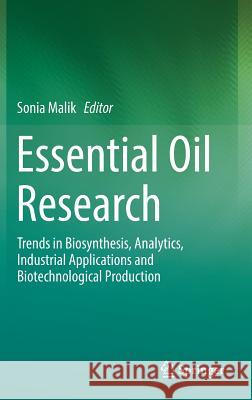Essential Oil Research: Trends in Biosynthesis, Analytics, Industrial Applications and Biotechnological Production » książka
topmenu
Essential Oil Research: Trends in Biosynthesis, Analytics, Industrial Applications and Biotechnological Production
ISBN-13: 9783030165451 / Angielski / Twarda / 2019 / 449 str.
Essential Oil Research: Trends in Biosynthesis, Analytics, Industrial Applications and Biotechnological Production
ISBN-13: 9783030165451 / Angielski / Twarda / 2019 / 449 str.
cena 645,58
(netto: 614,84 VAT: 5%)
Najniższa cena z 30 dni: 616,85
(netto: 614,84 VAT: 5%)
Najniższa cena z 30 dni: 616,85
Termin realizacji zamówienia:
ok. 22 dni roboczych
Dostawa w 2026 r.
ok. 22 dni roboczych
Dostawa w 2026 r.
Darmowa dostawa!
Kategorie:
Wydawca:
Springer
Język:
Angielski
ISBN-13:
9783030165451
Rok wydania:
2019
Wydanie:
2019
Ilość stron:
449
Waga:
0.82 kg
Wymiary:
23.39 x 15.6 x 2.54
Oprawa:
Twarda
Wolumenów:
01
Dodatkowe informacje:
Wydanie ilustrowane











